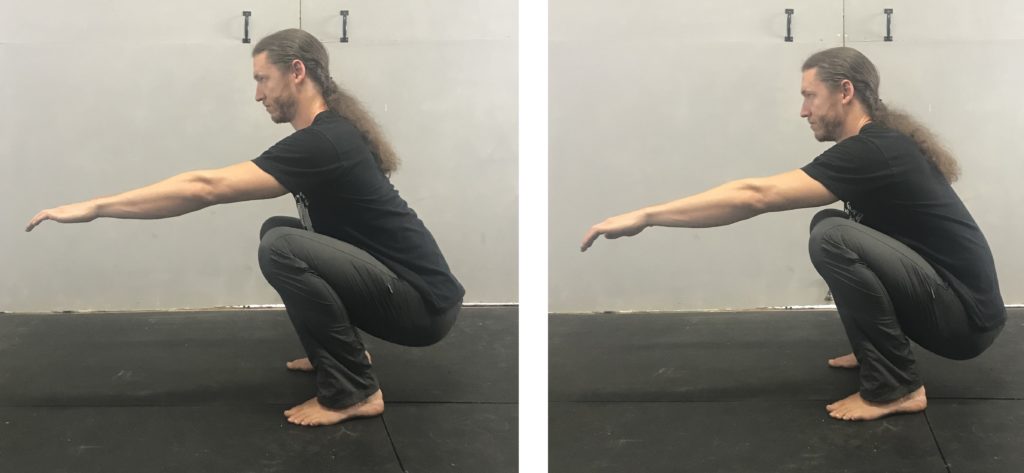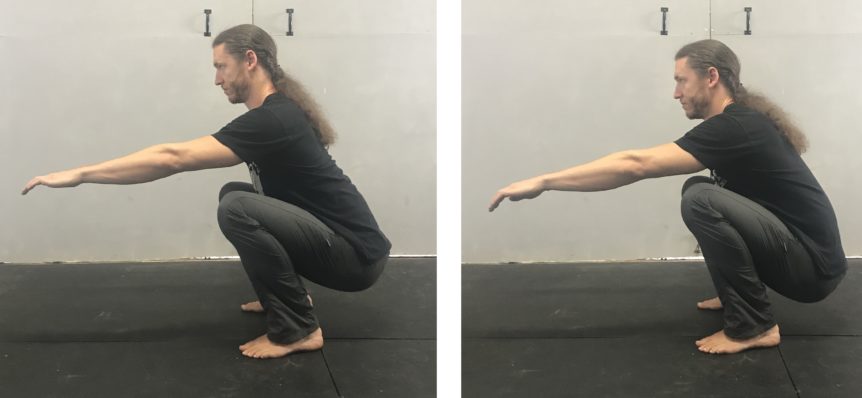Should you be squatting to a parallel depth, that is your thighs parallel to the floor?
Or should you squat all the way to rock bottom depth?
Like many things, the answer is…it depends.
Let’s start with what is healthier?
Simple answer. A rock bottom squat means that you have decent flexibility and mobility. Ideally, you want to not just be able to squat all the way down, but even rest there comfortably.
This is one of the “natural human movements” that is worth doing…if you are a human. Are you? Good, then you ought to be able to do this. To not have this range of motion means you’re limited and will suffer some consequences of that. I’m not judging, just calling it like it is.
The good news is that if you cannot do a rock bottom squat right now, it can be regained through progressive training.
A training roadmap for doing exactly this is laid out in Module 1 of The Ultimate Guide to Bodyweight Squats and Pistols.
What is healthy is a good starting place for this discussion. And really, as far as starting places go, you want to be able to do that in a bodyweight squat.
With weights and strength, the matter gets more complicated.
You see, one thing that can happen in a rock bottom squat is that the lower back can round. It doesn’t have to, but it takes more mobility and flexibility to stop this from occurring.

If you have a heavy load on your back than you generally do not want this rounding to occur. Not the best for the spine.
And that is why squats are often stopped at the parallel range of motion. Keeping your back straight up to this range of motion is easy to do.
But, if you think about it, this makes the squat just a partial. There is nothing wrong with partials, but if you only ever do them, well that’s a good reason many people can’t squat to rock bottom.
With the proper work, over time, you can squat with weights to rock bottom. This is more true in the front squat than the back squat, as the position of the weight affects things.
That’s what I’ve been doing lately. All my squats are full range. If you want to strengthen a full range of motion, it’s what is actually called for.
I’m not saying that you need to do this, as it really depends on where you’re at.
Of course, you will be stronger just going to parallel. And for many that may be as safe as they can keep it, which is fine.
So that covers the weights. One last thing to look at is what would maximize leg strength and movement ability?
Ultimately, if you want the strongest legs you would do all kinds of partials in addition to the full range. Full range squats, parallel squats, half squats, quarter squat, and even the last inch of lockout.
Why? Because by doing all of those you can maximize the ability of every area of the strength curve. The less range of motion the more weight you can handle.
In other words, if you only ever do one range of motion, you are only really strengthening the weakest point. The other areas find that too easy. By doing different ranges of partials you can really train each and every bit of the legs to their maximum ability.
I’m not saying you need to do this. But it could be done…and it would build the most usable strength in every way to do so.

